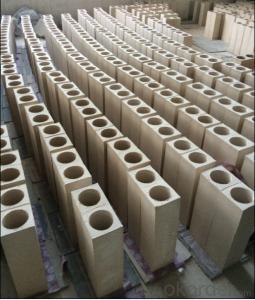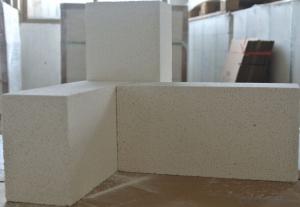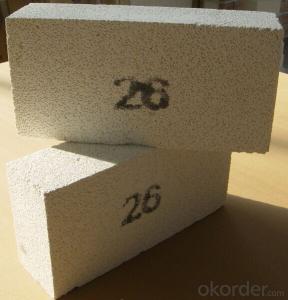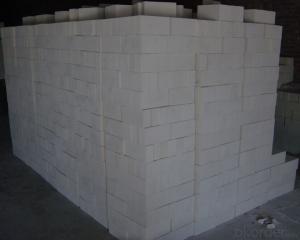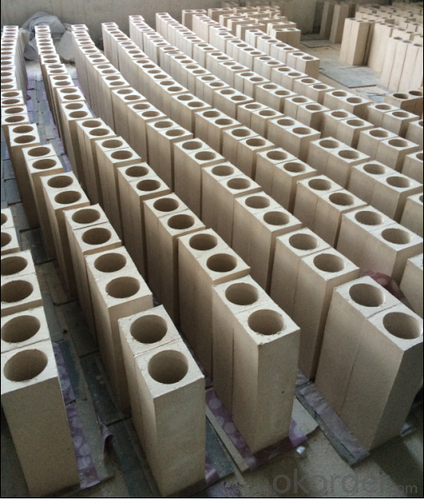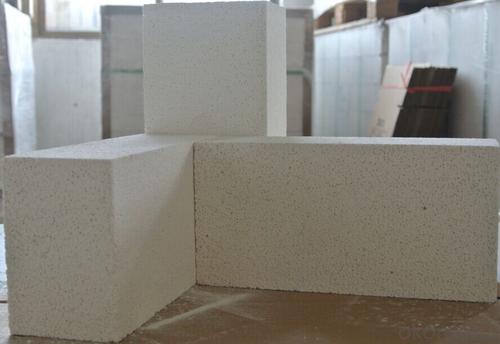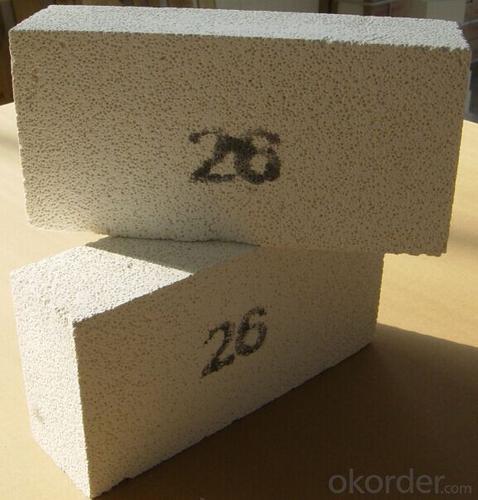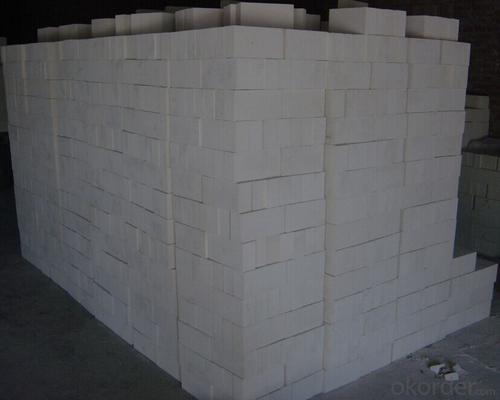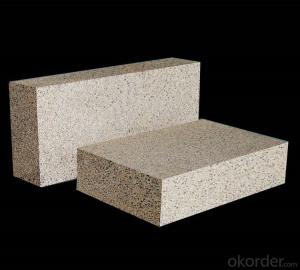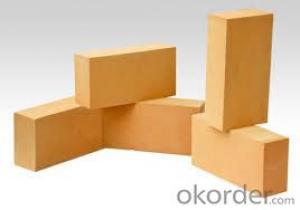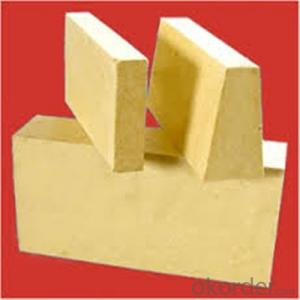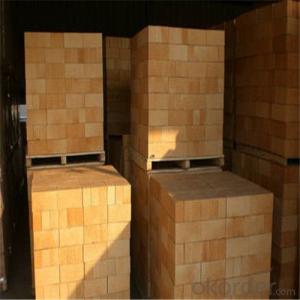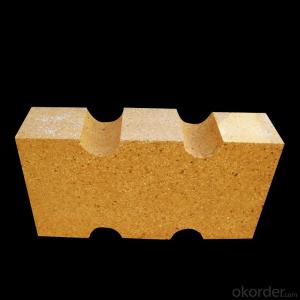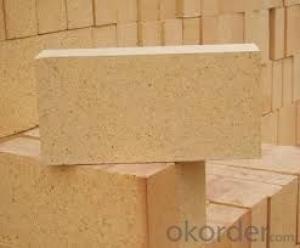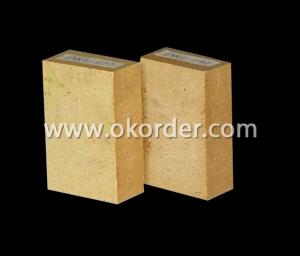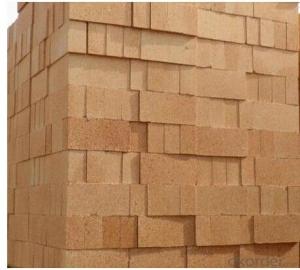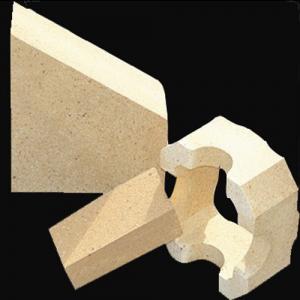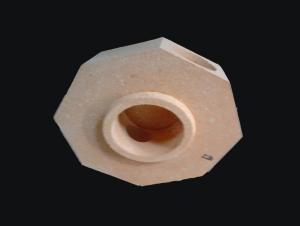Fireclay Brick for Cement Kiln Refractory Use
- Loading Port:
- Qingdao
- Payment Terms:
- TT OR LC
- Min Order Qty:
- 2 m.t
- Supply Capability:
- 5000 m.t/month
OKorder Service Pledge
OKorder Financial Service
You Might Also Like
Brief discription for Clay brick of refractory brick for cement kiln
CMAX Clay brick of refractory brick for cement kiln are classified according to alumina content ranging from 48% to 90%.
CMAX Clay brick of refractory brick for cement kiln are commonly used in blast furnace, hot blast furnace, the roof of electric furnace, teeming ladle, rotary kiln,regenerator, etc.
Brief features for Clay brick of refractory brick for cement kiln
◆Low thermal conductivity
◆Excellent acid and base slagging resistance
◆High refractoriness
◆Excellent thermal shock resistance
◆Excellent mechanical strength
◆Good spalling resistance and wear resistance.
◆Good corrosion resistance.
◆High-temperature creep rate is quite low.
◆Good volume stability at high temperature.
◆Low bulk density, low thermal conductivity, good thermal insulation performance.
Technical data for Clay brick of refractory brick for cement kiln
ITEM | UAL48 | UAL55 | UAL65 | UAL75 | UAL80 | UAL85 | ALP80 |
Refractoriness, ℃ | 1750 | 1770 | 1790 | 1790 | 1810 | 1810 | 1810 |
Apparent Porosity,% | 22 | 22 | 23 | 23 | 20 | 20 | 18 |
C.C.S, Mpa | 39 | 44 | 49 | 53 | 55 | 60 | 100 |
Refractories Under Load (0.2Mpa),℃ | 1420 | 1470 | 1500 | 1520 | 1500 | 1520 | 1550 |
Reheating Linear Change,% | 1450℃x2h 0.1~-0.4 | 1500℃x2h 0.1~-0.4 | 1500℃x2h 0.1~-0.4 | 1500℃x2h 0.1~-0.4 | 1550℃x2h -0.5~+0.5 | 1550℃x2h -0.5~+0.5 | 1550℃x2h -0.5~+0.5 |
Al2O3 Content , % | 48 | 55 | 65 | 75 | 80 | 85 | 82 |
FAQ
Q1:Are you a manufacture or trader?
A:Factory+trade(mainly factories,at the same time,we operates other related products).
Q2:Can we visit your factory?
A:Sure,welcome at any time,seeing is believing.
Q3:What's the MOQ of trial order?
A:No limit,We can offer the best suggestions and solutions according to your condition.
Q4:Which payment terms can you accept?
A:T/T,L/C are available for us.
Q5:After an order is confirmed,when to deliver?
A:15-25days after deposit.
Q6:Is your company accept customization?
A:We have own factory and excellent technical team,and we accept OEM service.
Q7:How about your company's certification?
A:ISO9001 and Test Report,also we could apply other necessary certification.
Q8:How to slove the quality problems?
A:If the products are not confirmed to customer samples or have quality problems,our compay will be responsible to make compensation for it.
- Q: What is the role of refractory brick, whether is there any books to introduce refractory bricks
- Fire resistant, flame retardant, used for building stove and firewall,
- Q: How to repair the boiler?
- use refractory bricks and plastic refractory
- Q: Is fireclay brick acidproof? Does clay brick anti corrosion when it's used to build chimney lining?
- Refractory bricks anti acid and alkali after high-temperature calcination, and anti-corrosion won't be a problem
- Q: Which is more useful, aerated concrete block or clay brick?
- In the same basic block and brick aerated concrete price, size and clay brick is basically the same, but the aerated concrete block and more environmental protection, thermal insulation, light weight, high strength and high efficiency in construction is more prominent, so the aerated concrete block soon replace clay bricks as the main material of wall.
- Q: Should refractory cement hang inner core when use carbon steel pipe make water heating hearth by self?
- The main purpose of adding refractory cement or refractory brick is to avoid the sulfur in coal in the combustion process of corroding metal, especially under the conditions of high water content and low temperature of flue gas. If use natural gas after desulfurization, without considering the life circumstances, can not be adopted, but the carbon steel pipe is unsuitable for what you said, safety first! Earnestly!
- Q: th choose of different refractory bricks in the rotary?kiln
- According to the characteristics of each belt, magnesium chromium brick. Take the most kiln foe example, the configuration of kiln refractory is not the same, the burning of the product is not the same. there are many kinds of rotary kiln. magnesia bricks are generally used in high temperature zone, anti-stripping alumina brick,silmo brick are used in temperate zone, clay brick is mainly used in low temperature zone. generally inlet and the outlet use corundum mullite, wear-resistant castable, spinel brick,etc. select brick of proper performance, but also take into account the economy
- Q: What is the refractory brick of the electric furnace?
- there is no problem if it can be dismantled. And refractory brick material of every place is not the same, life is not the same. Buy some for backup , and change it once it is broken, there is no standard, the lining can be hit, as long as the induction coil can be fixed
- Q: Can you direct the clay brick walls embryo
- Times are different, where there is no modern calcination process. With glutinous rice water in the soil, but glue well, but there is no comparable with cement and other building materials. Not long, can not withstand weathering.
- Q: The application of wasted refractory bricks
- Refine waste copper, and waste refractory bricks can be used again, shoot two hawks with one arrow
Send your message to us
Fireclay Brick for Cement Kiln Refractory Use
- Loading Port:
- Qingdao
- Payment Terms:
- TT OR LC
- Min Order Qty:
- 2 m.t
- Supply Capability:
- 5000 m.t/month
OKorder Service Pledge
OKorder Financial Service
Similar products
Hot products
Hot Searches
Related keywords
